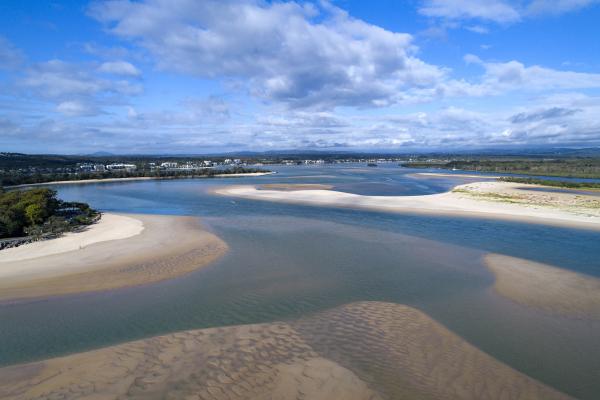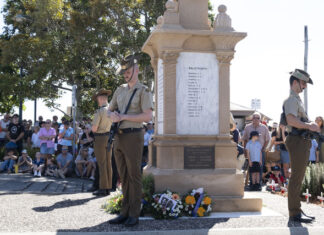When Mayor Clare Stewart promised to investigate the council funded Bring back the Fish (BBF) project if elected on 28 March retired fisherman Trevor Clarey expected an independent inquiry.
In her election campaign Cr Stewart said she “would immediately request that the CEO of Noosa Council provide all documents and explain all processes that were employed in the ratepayers funding of the failed Noosa River oyster bag ‘bring back the fish’ fiasco”.
But when Trevor met Cr Stewart last week she told him “I’ve looked at it and there’s nothing we can do. We have to honour these contracts set by the previous council”.
“Looking at it is not an inquiry by an independent person, calling witnesses, asking where’s the fish science, where’s the references,” Trevor said. “It’s so disappointing.“
However this week Cr Stewart Noosa Mayor Clare Stewart said a community engagement process next month would give residents the chance to get more information on the Oyster Reef Restoration Project.
“This was a project supported and ratified by the previous council in July 2019 and I’ve asked for a briefing from senior staff regarding the milestones and measurable outcomes of the project,” she said.
“In addition a workshop for councillors is scheduled for later this month and I am sure this will give us the necessary information about the project,
“I am also looking to hold a public forum once the new budget is adopted to provide those interested in this project to understand it, ask questions, get some clarity on its plans and ensure there is transparency and openness around the project.”
A number of public forums and engagement opportunities are also planned throughout the project.
Cr Stewart said although she has voiced reservations about the project’s significant funding, since her election, the focus has been on council’s COVID response and the formation of the Council 2020-21 budget.
“How we bounce back from COVID has been the top priority at this stage,”
“In regards to the Oyster Reef Project, a contract was signed last year and funding for the three-year project is subject to specific milestones being met, so it’s cognisant of this new council to ensure that ratepayers’ money is accounted for and the milestones are achieved,” she said.
“Under the agreement, council paid the first instalment of $179,000 in August last year and any further payments are based on milestones in the funding agreement.
“I understand The Nature Conservancy has appointed a project manager and we will carefully monitor the project’s progress.”
The Noosa Biosphere Reserve Foundation’s Bring Back the Fish project began after a 2015 study by The Nature Conservancy titled, Restoration of Noosa Estuary: An assessment of oyster recruitment.
The study found the Noosa River Catchment was considered “the best performing in South East Queensland in terms of water quality, diversity of in-stream habitats and fish production (Sunshine Coast Regional Council 2012) and therefore represents a location where restoration of functionally extinct habitats (such as oyster reefs) will likely have a high chance of success.”
TNC suggested a small-scale pilot oyster reef restoration project should be treated as an experiment and developed in conjunction with a university group. It estimated the establishment of a few trial reefs to cost $50,000-$100,000 including detailed monitoring.
The BBF project, conceived by The Thomas Foundation (TTF) and Noosa Parks Association (NPA) following an expert workshop convened by TNC, has been funded by the Noosa Biosphere Reserve Foundation (NBRF), USC, Noosa Parks Association and The Thomas Foundation.
In the initial $1.5m project a University of the Sunshine Coast research team in November 2017 sited 14 artificial oyster reefs, each containing nine biodegradable coconut mesh bags filled with oyster shells in the river.
At the time marine ecologist Dr Ben Gilby said the project expected spat or oyster larvae found to be naturally occurring in the river would settle on the created reefs and grow.
However in January 2019 the USC team discovered eight out of 14 artificial oyster reefs sited in the Noosa River had been irreparably damaged and had to be removed. The research team said they learnt as a method it worked.
“We got two to 10 times more fish around the reefs. In the first few months the reefs sucked the fish from somewhere else but over 1-2 years you get more recruitment of smaller fish and they survive longer in that habitat,” they said.
The USC research team was dropped from the research project with management taken over by The Nature Conservancy.
In January 2019 Noosa Council agreed in principle to commit $1.2m toward the second phase of the project.
Under the deal Council would partner with TNC which would match the $1.2m contribution, manage the next phase of the project and seek to source a further $1.2m investment.
A $1.2m donation from TTF, contributed from TNC, kick started the second phase of the project.
Att Council’s Ordinary Meeting at the time Cr Ingrid Jackson described a USC one-year monitoring report as having a “lack of evidence … of the current reef design forming a stable matrix”, a lack of “detailed results from fish studies” and “key areas where targets for success have not yet been achieved and would be better assessed after another year of monitoring”.
Cr Jackson did not support the deal saying the decision was being made without sufficient information, without sufficient evaluation of the oyster reef trial, without financial analysis and without due process.
Under the proposed partnership $1.3m was to be spent on installing oyster reefs, $1.1m would go toward engaging various scientists, project planning, and community liaison. And a further $1.2m, when sourced, would be used “to expand the installation of oyster reefs”.







